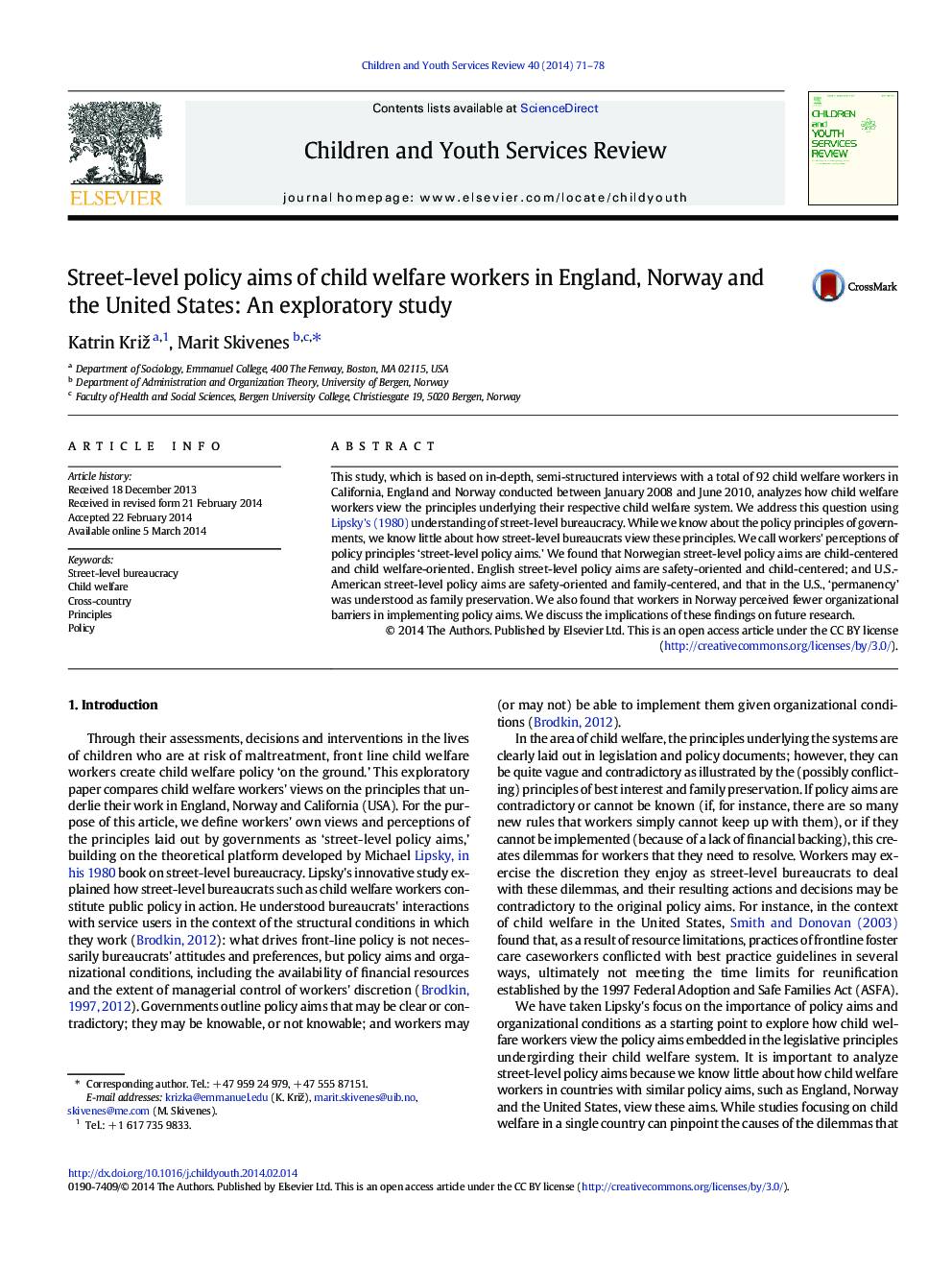| Article ID | Journal | Published Year | Pages | File Type |
|---|---|---|---|---|
| 6834372 | Children and Youth Services Review | 2014 | 8 Pages |
Abstract
This study, which is based on in-depth, semi-structured interviews with a total of 92 child welfare workers in California, England and Norway conducted between January 2008 and June 2010, analyzes how child welfare workers view the principles underlying their respective child welfare system. We address this question using Lipsky's (1980) understanding of street-level bureaucracy. While we know about the policy principles of governments, we know little about how street-level bureaucrats view these principles. We call workers' perceptions of policy principles 'street-level policy aims.' We found that Norwegian street-level policy aims are child-centered and child welfare-oriented. English street-level policy aims are safety-oriented and child-centered; and U.S.-American street-level policy aims are safety-oriented and family-centered, and that in the U.S., 'permanency' was understood as family preservation. We also found that workers in Norway perceived fewer organizational barriers in implementing policy aims. We discuss the implications of these findings on future research.
Related Topics
Health Sciences
Medicine and Dentistry
Perinatology, Pediatrics and Child Health
Authors
Katrin Križ, Marit Skivenes,
